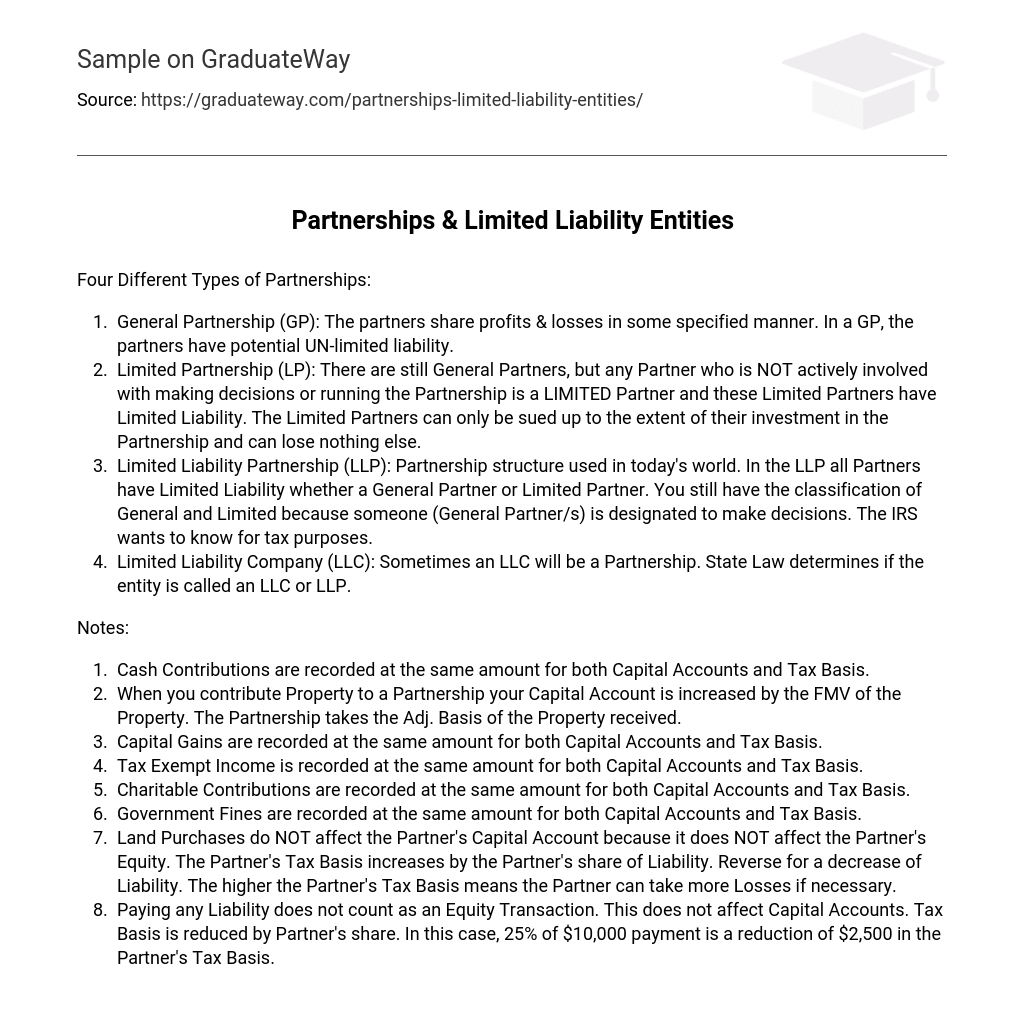Four Different Types of Partnerships:
- General Partnership (GP): The partners share profits & losses in some specified manner. In a GP, the partners have potential UN-limited liability.
- Limited Partnership (LP): There are still General Partners, but any Partner who is NOT actively involved with making decisions or running the Partnership is a LIMITED Partner and these Limited Partners have Limited Liability. The Limited Partners can only be sued up to the extent of their investment in the Partnership and can lose nothing else.
- Limited Liability Partnership (LLP): Partnership structure used in today’s world. In the LLP all Partners have Limited Liability whether a General Partner or Limited Partner. You still have the classification of General and Limited because someone (General Partner/s) is designated to make decisions. The IRS wants to know for tax purposes.
- Limited Liability Company (LLC): Sometimes an LLC will be a Partnership. State Law determines if the entity is called an LLC or LLP.
Notes:
- Cash Contributions are recorded at the same amount for both Capital Accounts and Tax Basis.
- When you contribute Property to a Partnership your Capital Account is increased by the FMV of the Property. The Partnership takes the Adj. Basis of the Property received.
- Capital Gains are recorded at the same amount for both Capital Accounts and Tax Basis.
- Tax Exempt Income is recorded at the same amount for both Capital Accounts and Tax Basis.
- Charitable Contributions are recorded at the same amount for both Capital Accounts and Tax Basis.
- Government Fines are recorded at the same amount for both Capital Accounts and Tax Basis.
- Land Purchases do NOT affect the Partner’s Capital Account because it does NOT affect the Partner’s Equity. The Partner’s Tax Basis increases by the Partner’s share of Liability. Reverse for a decrease of Liability. The higher the Partner’s Tax Basis means the Partner can take more Losses if necessary.
- Paying any Liability does not count as an Equity Transaction. This does not affect Capital Accounts. Tax Basis is reduced by Partner’s share. In this case, 25% of $10,000 payment is a reduction of $2,500 in the Partner’s Tax Basis.





